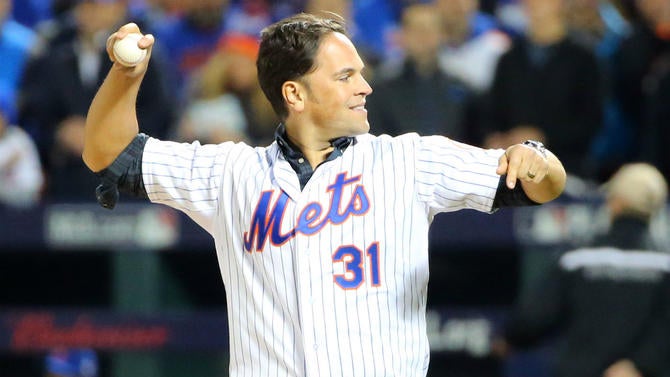Mike Piazza's career doesn't exist to spur disagreement, but sometimes it feels that way. Talk about Piazza's offensive genius -- and we've declared him the greatest slugging catcher ever -- and you're inviting his critics to make claims of their own, usually involving his supposed use of performance-enhancing drugs. Those arguments never go anywhere worth the travel. Fortunately, another Piazza-inspired debate seems to be headed down a better path.
Anyone who followed Piazza's career knows he was considered a bat-first backstop, in part due to his offensive exploits (think of this as an inverse Nichols Law situation), and in part due to his substandard 23 percent caught-stealing rate. But the past few years have included enough advancement in how catchers' defense is regarded that it's time to reconsider our past evaluations of Piazza's as potential oversimplifications, ones borne from our flawed approach to the task.

Back in January, Baseball Prospectus rolled out a new set of metrics covering most of what goes into the position: throwing, yes, but blocking balls and framing pitches as well. You'd be right to approach any defensive metric with the skepticism of a dog approaching its leash, but Prospectus' metrics (mostly) pass the sniff test and have been subject to assiduous testing and tweaking.
If, at minimum, you can suspend your disbelief for a few beats, here's the Piazza character sketch the metrics crafted, according to Ben Lindbergh's piece from earlier in the year on the matter:
Per opportunity, Piazza ranks in the fifth percentile as a thrower among regular catchers. But he also places in the 74th percentile as a pitch-framer, and the 89th percentile as a pitch-blocker.
In other words, Piazza excelled at everything but throwing. This is big because we often assign inappropriate weight to the various aspects of catcher defense. Throwing out basestealers, though the easiest part to measure and appraise, receives a disproportionate amount of attention relative to its importance. Think of it this way: everyone inside baseball agrees that pitchers, not catchers, are mostly responsible for stolen bases, so why do we treat it as the determinant?
It's not like the other areas where Piazza did well are newfangled, either. The idea of quantifying framing and blocking remain relatively new -- Brewers employee Dan Turkenkopf was on the beat in 2008 -- but the concepts themselves are old school. Check most any old baseball book that details catching and you'll find references to each. Heck, Keith Hernandez talked about sticking pitches in his book with regards to another Hall of Fame Mets backstop, Gary Carter.
Piazza's defensive totals, per Baseball Prospectus.com (rounded to nearest run):
| Metric | Career runs |
| Framing | 99 |
| Throwing | -47 |
| Blocking | 11 |
| Total | 63 |
The question, then, should not be whether these are skills, but rather the numbers capture the effect. That's difficult to answer -- and at this point it varies by person. But if you're open-minded and up-to-date on your baseball findings, then you might consider the Piazza-as-horrible-defender narrative to be one that no longer applies.
Just don't expect everyone to agree with you -- not yet, not about Piazza.






















